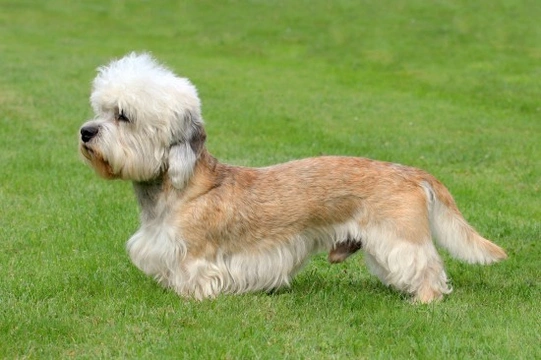
Selective breeding and line breeding in dogs - what is it and how is it done?
Selective breeding is the term used to refer to human intervention in dog breeding, which is usually undertaken to produce desirable traits within the subsequent puppies or to improve the health or quality of the line. The “line” is the term used to refer to the various generations of related dogs, from the parent dogs through their offspring, and down through subsequent generations.
When you buy a registered pedigree dog or puppy, they usually come with an already assigned formal name, which is usually comprised of a combination of the name or “brand” of the breeder or a specific line that the breeder has produced, plus the dog’s own unique and individual name. The presence of the breeder name or line name is part of the process of identifying the family tree of the dog, and what their origins and ancestry are.
For instance, the Best in Show winner at Crufts 2013 was a dog named “Soletrader Peek a Boo,” where “Soletrader” is the breeder’s brand or line name, and “Peek a Boo” is the unique name of the dog. Soletrader Peek a Boo is a Petit Basset Griffon Vendeen.
What constitutes selective breeding?
Most people think of selective breeding as being a very involved process of genetic analysis, conformation examination and ongoing improvement and evolution of the appearance and traits of any line, and in many cases this is exactly what it does entail!
But even simply choosing to mate your dog to another dog of the same breed or a specific dog of that breed constitutes selective breeding, as does anything else that involves human input and intervention into what dog mates with what bitch, rather than simply keeping an un-neutered dog and letting them find their own mate!
Why do we selectively breed?
In its simplest form, selective breeding is necessary to maintain the pure status of pedigree dog breeds, as if pedigree dogs were not mated to other dogs of the breed, there would be no pedigree breeds or lines in existence at all. However there is more to it than this, and selective breeding is not only necessary in order to keep pedigree breeds going in perpetuity, but to increase the positive and appealing traits of the breed while attempting to breed out undesirable issues, such as poor conformation or colouring that is not considered to be of the breed standard.
Selective breeding is also important in the formation of new breeds, as there is a limited gene pool available in order to establish the breed in the first place.
Line breeding in dogs
Line breeding is the process of developing an ancestral dynasty of related dogs, which often involves mating dogs that are related to each other in order to strengthen the presence of the traits that they share. This is sometimes referred to as inbreeding, especially when taken to extremes, such as when mating siblings to parents or brothers to sisters. Inbreeding is generally discouraged other than during the early days of the formation of a new breed, when only a limited amount of unrelated dogs exist.
However, mating cousins, second cousins and other distantly related dogs is a common part of professional dog breeding in many breeds, and this is what is usually meant by line breeding.
Out crossing for health
Line breeding and even breeding to very distantly related or unrelated dogs of the same breed can serve to introduce flaws and mutations into the gene pool if the number of dogs available to breed from is small, as well as introducing the desirable or exaggerated traits that line breeding aims to achieve.
In order to counteract this and introduce sufficient genetic diversity into the gene pool to promote health, out crossing is sometimes performed, which means breeding dogs of one breed or line to dogs that are totally unrelated, and possibly not even of the same breed.
Backcrossing for specific traits
Backcrossing refers to mating a descendent of a given line back to one of its original ancestors, such as the grandfather or great grandfather. This process is undertaken if the subsequent generations of dogs that descended from the line appear to be losing quality, or the particular desirable traits that are the line’s signature are becoming diluted.
Backcrossing serves to “reset” the traits of the line back to an earlier point in time, and correct divergences that may have crept in along the way. Usually, backcrossing needs to be performed more than once within a line to correct any undesirable issues that have arisen and put the line back on the right track.
Culling
The process of culling involves removing dogs with undesirable traits from the available gene pool, so that the perceived faults that they possess are not bred into subsequent generations. Historically, it was not uncommon for healthy dogs that simply did not conform to the desirable breed standard to be put to sleep by professional commercial breeders, but this practice has now fortunately been outlawed by the UK Kennel Club.
Today, when we refer to the culling of dogs from a breed line, it simply means that the dogs will be spayed and neutered, and not allowed to reproduce. These dogs can then be sold as companion pets to loving homes and caring owners who are not concerned about the show quality of their dogs.



